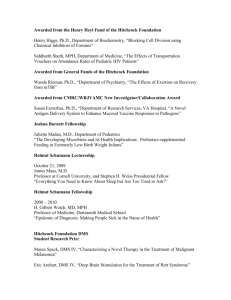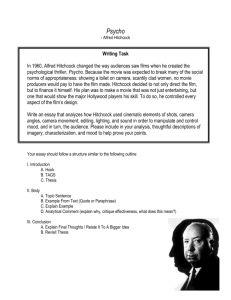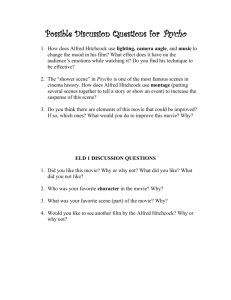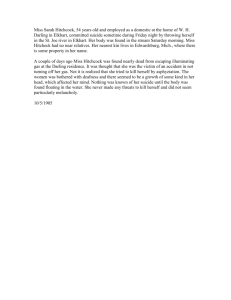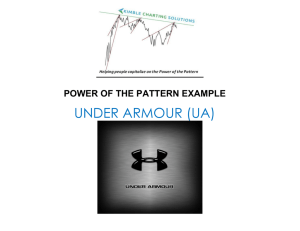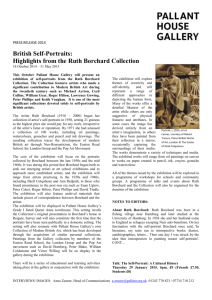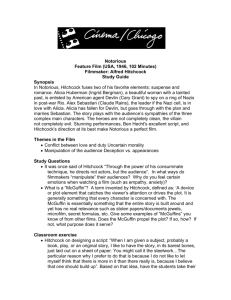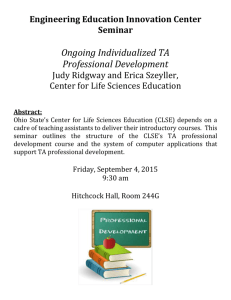Alfred Hitchcock – Edwin Borchard
advertisement
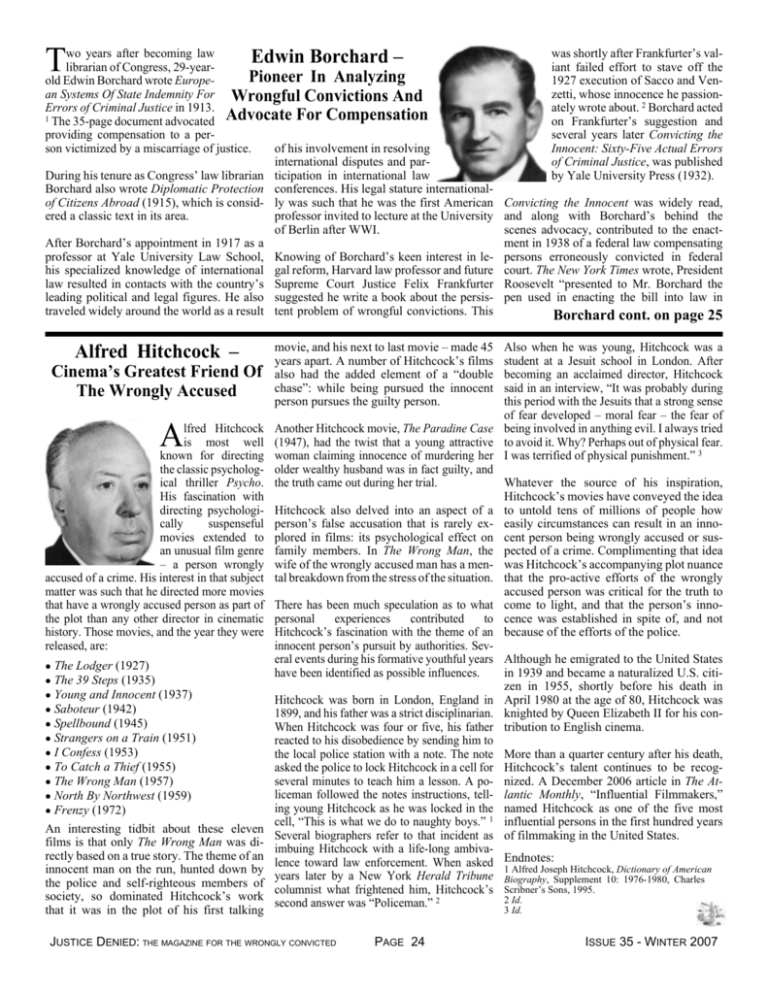
T wo years after becoming law librarian of Congress, 29-yearPioneer In Analyzing old Edwin Borchard wrote European Systems Of State Indemnity For Wrongful Convictions And Errors of Criminal Justice in 1913. 1 The 35-page document advocated Advocate For Compensation providing compensation to a person victimized by a miscarriage of justice. of his involvement in resolving international disputes and parDuring his tenure as Congress’ law librarian ticipation in international law Borchard also wrote Diplomatic Protection conferences. His legal stature internationalof Citizens Abroad (1915), which is consid- ly was such that he was the first American ered a classic text in its area. professor invited to lecture at the University of Berlin after WWI. After Borchard’s appointment in 1917 as a professor at Yale University Law School, Knowing of Borchard’s keen interest in lehis specialized knowledge of international gal reform, Harvard law professor and future law resulted in contacts with the country’s Supreme Court Justice Felix Frankfurter leading political and legal figures. He also suggested he write a book about the persistraveled widely around the world as a result tent problem of wrongful convictions. This was shortly after Frankfurter’s valiant failed effort to stave off the 1927 execution of Sacco and Venzetti, whose innocence he passionately wrote about. 2 Borchard acted on Frankfurter’s suggestion and several years later Convicting the Innocent: Sixty-Five Actual Errors of Criminal Justice, was published by Yale University Press (1932). Edwin Borchard – Alfred Hitchcock – Cinema’s Greatest Friend Of The Wrongly Accused A lfred Hitchcock is most well known for directing the classic psychological thriller Psycho. His fascination with directing psychologically suspenseful movies extended to an unusual film genre – a person wrongly accused of a crime. His interest in that subject matter was such that he directed more movies that have a wrongly accused person as part of the plot than any other director in cinematic history. Those movies, and the year they were released, are: The Lodger (1927) The 39 Steps (1935) Young and Innocent (1937) Saboteur (1942) Spellbound (1945) Strangers on a Train (1951) I Confess (1953) To Catch a Thief (1955) The Wrong Man (1957) North By Northwest (1959) Frenzy (1972) An interesting tidbit about these eleven films is that only The Wrong Man was directly based on a true story. The theme of an innocent man on the run, hunted down by the police and self-righteous members of society, so dominated Hitchcock’s work that it was in the plot of his first talking Convicting the Innocent was widely read, and along with Borchard’s behind the scenes advocacy, contributed to the enactment in 1938 of a federal law compensating persons erroneously convicted in federal court. The New York Times wrote, President Roosevelt “presented to Mr. Borchard the pen used in enacting the bill into law in Borchard cont. on page 25 movie, and his next to last movie – made 45 years apart. A number of Hitchcock’s films also had the added element of a “double chase”: while being pursued the innocent person pursues the guilty person. Also when he was young, Hitchcock was a student at a Jesuit school in London. After becoming an acclaimed director, Hitchcock said in an interview, “It was probably during this period with the Jesuits that a strong sense of fear developed – moral fear – the fear of Another Hitchcock movie, The Paradine Case being involved in anything evil. I always tried (1947), had the twist that a young attractive to avoid it. Why? Perhaps out of physical fear. woman claiming innocence of murdering her I was terrified of physical punishment.” 3 older wealthy husband was in fact guilty, and the truth came out during her trial. Whatever the source of his inspiration, Hitchcock’s movies have conveyed the idea Hitchcock also delved into an aspect of a to untold tens of millions of people how person’s false accusation that is rarely ex- easily circumstances can result in an innoplored in films: its psychological effect on cent person being wrongly accused or susfamily members. In The Wrong Man, the pected of a crime. Complimenting that idea wife of the wrongly accused man has a men- was Hitchcock’s accompanying plot nuance tal breakdown from the stress of the situation. that the pro-active efforts of the wrongly accused person was critical for the truth to There has been much speculation as to what come to light, and that the person’s innopersonal experiences contributed to cence was established in spite of, and not Hitchcock’s fascination with the theme of an because of the efforts of the police. innocent person’s pursuit by authorities. Several events during his formative youthful years Although he emigrated to the United States have been identified as possible influences. in 1939 and became a naturalized U.S. citizen in 1955, shortly before his death in Hitchcock was born in London, England in April 1980 at the age of 80, Hitchcock was 1899, and his father was a strict disciplinarian. knighted by Queen Elizabeth II for his conWhen Hitchcock was four or five, his father tribution to English cinema. reacted to his disobedience by sending him to the local police station with a note. The note More than a quarter century after his death, asked the police to lock Hitchcock in a cell for Hitchcock’s talent continues to be recogseveral minutes to teach him a lesson. A po- nized. A December 2006 article in The Atliceman followed the notes instructions, tell- lantic Monthly, “Influential Filmmakers,” ing young Hitchcock as he was locked in the named Hitchcock as one of the five most cell, “This is what we do to naughty boys.” 1 influential persons in the first hundred years Several biographers refer to that incident as of filmmaking in the United States. imbuing Hitchcock with a life-long ambivalence toward law enforcement. When asked Endnotes: 1 Alfred Joseph Hitchcock, Dictionary of American years later by a New York Herald Tribune Biography, Supplement 10: 1976-1980, Charles columnist what frightened him, Hitchcock’s Scribner’s Sons, 1995. 2 Id. second answer was “Policeman.” 2 JUSTICE DENIED: THE MAGAZINE FOR THE WRONGLY CONVICTED 3 Id. PAGE 24 ISSUE 35 - WINTER 2007 Borchard cont. from page 24 recognition of the role the Yale jurist played in the legislation.” 3 The compensation amounts specified in that 1938 bill remained unchanged for 66 years, until they were increased by The Justice For All Act of 2004. A less well-known aspect of Borchard’s career is that as one of the world’s leading experts on international law, he was a life-long advocate of U.S. neutrality. He was a vocal critic of the United States’ entry into WWI – arguing that there was no national interest to do so. He was also the country’s leading legal professional opposed to 1936’s so-called “Neutrality Bill.” In his January 1936 testimony before the House Foreign Affairs Committee, Borchard described the bill as misnamed because it altered established rules of international law that ensured the United States’ neutrality in disputes between other countries. Borchard prophetically told the Congressional committee that the bill “would be likely to draw this country into the wars it is intended to avoid.”4 In 1937 Borchard co-authored the seminal work advocating U.S. neutrality, Neutrality for the United States (rev. ed. 1940). After his worst fears about what would result from the failure of the U.S. to follow neutral policies were realized and the country became embroiled in WWII, Borchard opposed the federal government’s disregard for the rights of Americans in the name of national security. Borchard wrote briefs in two of the most important cases to reach the Supreme Court involving challenges to the U.S. military’s summary imprisonment of 120,000 innocent Japanese-Americans in concentration camps. The two cases were Hirabayashi v U.S., 320 U.S. 81 (1943), and Korematsu v. U.S., 323 U.S. 214 (1944). 5 David Janssen – on warden changed his mind when prisoners threatened to riot after he announced a.k.a. Dr. Richard Kimble that he intended to stop them from watching The Fugitive. In England a grass-roots aca.k.a. The Fugitive tion committee formed by viewers was sucrom 1963 to cessful in persuading Granada TV to 1967, many mil- reverse its decision to take the program off lions of people the air as a bad influence. 2 throughout the world watched The Fugi- Kimble was exonerated when the mystery surtive and Dr. Richard rounding the death of his wife was resolved in Kimble’s four-year The Fugitive’s final episode in August 1967. pursuit of the one- That program was the highest rated program in armed man he saw U.S. television history up to that time. Four running from his decades later it is still the third highest rated house who either murdered Kimble’s wife or episode of a television series in history. 3 Jansknew who did. Kimble’s quest was hampered sen was so popular as Kimble that the series by being a fugitive from the police, since he finale was seen by many times more people escaped from the train taking him to the death than saw the 1993 movie version in theaters, house after he was wrongly convicted of his that starred Harrison Ford as Kimble. wife’s murder. David Janssen died of cancer at the age of Although actor David Janssen starred in 48 in 1980. four television series from 1957 to 1975, his most memorable role was his four year Endnotes: 1 David Janssen’s four series were: portrayal as Kimble. 1 Richard Diamond, Private Detective. Four years, 1957-1961. F Janssen’s role as Kimble touched a nerve in viewers. Many prisoners wrote Janssen that they too had been wrongly convicted. People around the country reported sighting a suspicious one-armed man. A southern pris- T The Fugitive, Four years, 1963-67. O’Hare, United States Treasury. One year, 1971. Harry O. Two years, 1974-75. 2 The Fugitive website, http://www.nostalgiacentral.com/tv/drama/fugitive.htm 3 Only the final episode of M*A*S*H (1983) and the Who Shot JR? (1980) episode of Dallas outrank it. All-Time TopRated TV Programs, http://www.chez.com/fbibler/tvstats/misc/all_time.html The Lost Days Of The Fugitive he Fugitive debuted on to its final episode in 1967, September 17, 1963 as an was what makes the series hour-long weekly ABC televiunique in television history. sion series. The plot of The Week after week, year after Fugitive was straightforward: year, as Kimble pursed his by Hans Sherrer Dr. Richard Kimble saw a Don Quixote like quest for one-armed man in his headlights his wife’s killer, strangers from running away from his house as one end of this country to the he arrived home one night. other helped him. While not When he went inside he found always knowing Kimble’s his wife Helen dead in their lividentity at the beginning of an In June 1950 Borchard retired after 33 years ing room. Kimble had been seen episode, the people he beas a member of Yale Law School’s faculty. by neighbors arguing with his friended each week, who he He died in July 1951 at the age of 66. wife earlier that evening – so the rented a room from, or who had police didn’t believe his story given him a job, knew who he Sources: about the one-armed man, and was by the end of the program. Edwin Montefiore Borchard, Dictionary of American neither did the jury that convictYet knowing he was an esBiography, Supplement 5: 1951-1955. ed him of murdering her. It caped convicted murderer – of Endnotes: looked to them like he had murhis wife no less – those people 1 European Systems Of State Indemnity For Errors of dered his wife and tried to manbelieved in his innocence and Criminal Justice, by Edwin Borchard, 3 J. Am. Inst. ufacture an alibi for himself by helped him elude capture. How Crim. L. & Criminology 685, May 1912 to March leaving and then returning did they help Kimble? They 1913. Available on JD’s website, www.justicedenied.org/borchard_1913.pdf home. An innocent man sentenced to death, would give him money, or a tip on where to 2 The Case of Sacco and Vanzetti, by Felix FrankfurtKimble was able to escape when the train maybe look next for the one-armed man, or try er, Atlantic Magazine, 1927 3 Edwin Borchard, Law Expert Dead, Obituary, New carrying him to death row wrecked. He was to keep the police one step behind him by York Times, July 22, 1951. thus given a reprieve from the grim reaper, telling them when questioned, that he went in 4 Neutrality Bill Is Called Peril, New York Times, and a chance to embark on what turned into a a different direction than he had actually gone, January 10, 1936. or by denying that they had seen him. 5 For background information about Korematsu v. United four-year search for his wife’s killer. States, see, “In Memoriam, Fred Korematsu (19192005),” Justice:Denied, Issue 28, Spring 2005, p.5. However a twist in the storyline of The Fugi- Lieutenant Philip Gerard was Kimble’s nemtive from the beginning of the series in 1963 Fugitive cont. on page 26 JUSTICE DENIED: THE MAGAZINE FOR THE WRONGLY CONVICTED PAGE 25 ISSUE 35 - WINTER 2007
